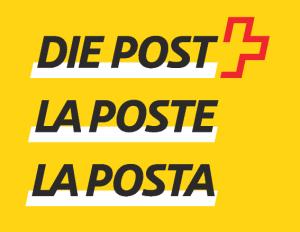Modern Framework for the New Realities of Work | Best Practice by Swiss Post
Diversity not only makes companies more attractive as employers, it also makes them more commercially successful. One important prerequisite for diversity is equality. For this reason, Swiss Post has been actively championing equality for many years, irrespective of gender, race, age, native language, cultural background, lifestyle, sexual orientation or other visible and invisible characteristics. Staff do not just benefit from a wide range of working models and training opportunities. Swiss Post is also committed to ensuring a healthy work-life balance, equal pay and zero tolerance of any form of discrimination. And these pledges are not just lip service – they have been adopted as binding principles in a recently renegotiated collective
employment contract.
This best practice was first published in the Gender Intelligence Report 2020.
Lifestyles and people’s personal outlooks on life are in flux, just as employees’ expectations of their employers are changing. Swiss Post is meeting these needs thanks to a renegotiated collective employment contract. A particular focus has been placed on creating a balance between work and family, with the specific aim of promoting equality for mothers and fathers in working life. In addition to 18 weeks of paid maternity leave, mothers are now entitled to six further unpaid weeks away from work. Paternity leave is being doubled from two to four weeks, and fathers will also be entitled to a further four weeks of unpaid leave. The same benefits apply to parents who adopt a child and to the female partners of mothers in same-sex partnerships. If both parents work for Swiss Post, the weeks can be pooled as joint parental leave and (as long as statutory requirements are met) divided between the couple as required.
Equal pay has also been enshrined in the new collective employment contract. Swiss Post has been analysing its salaries on a regular basis since 2009 to ensure wage transparency. With its unaccountable pay gap between women and men currently sitting at 2.2 percent, Swiss Post compares very favourably with other companies (a figure of up to 5 percent is deemed acceptable by the Swiss Confederation). But for Valérie Schelker, Head of Human Resources at Swiss Post, one thing is clear: “When it comes to unequal pay, every percentage point is one too many.” For this reason, Swiss Post is doing its utmost to reduce the unaccountable disparity even further. To this end, numerous measures have been devised, some of which have already been implemented. For example, the company has established an independent reporting office for employees, to which staff can anonymously report instances of suspected pay discrimination.
And, from 2021 onwards, pay brackets for many Swiss Post jobs will be made transparent even at the advertisement stage. Line managers and HR managers are also being trained to focus on pay equality right from the recruitment phase, as well as throughout the course of the employees’ professional development.

Head of Personnel Management at Swiss Post

Job sharing in management positions? This has been an option at Swiss Post for a number of years. Swiss Post believes that debate and diversity lead to greater reflection and, in turn, to better decisions. Two individuals will offer different capabilities, experiences and networks and will see issues from different perspectives. ‘Top sharing’, or job sharing in management positions, also makes challenging and rewarding full-time positions accessible to part-time employees and promotes a better balance between personal life and working life. Swiss Post believes that top sharing is not just a modern way of working, but also a model that holds great promise for the organisation as a whole.

This Best Practice was first published in the Gender Intelligence Report 2021.

Discover how EY is leading a paradigm shift in the workplace by embracing flexible working arrangements. Explore their innovative strategies for getting clients on board with this transformative approach, fostering collaboration and driving business success.

NatWest champions working families through their comprehensive initiatives, such as Partner Leave, Phase-Back Program, and a Remote First approach. Uncover how they lead in creating a gender-balanced and inclusive environment that supports employees' specific needs.

Experience KPMG's commitment to empowering employees through flexibility and work-life integration. Discover their diverse initiatives challenging traditional norms and supporting new parents, fostering a thriving workplace for all.

Step into ABB's world and witness their groundbreaking gender-neutral parental leave program. Discover how ABB fosters a gender-balanced and inclusive environment, breaking boundaries and paving the way for working families to thrive.

Discover how Migros revolutionizes the workplace with its commitment to work-life integration. Explore their emphasis on part-time positions, hybrid work models, and leadership support, creating an environment where employees can flourish.

Implementing a holistic 4 pillar pay equity framework led to decreasing the pay gap to under 1% - and keeping it there.

Leaders insisting on pay equity and undertaking serious independent analyses builds trust and a culture of inclusion.

A customised internal salary modelling tool ensures fair salaries and strengthens employee confidence.

The full pay flexibility deal allows new parents to decide how they want to manage the transition back to work.

Looking beyond data helps Syngenta make pay equity a fundamental element of the company's culture rather than just a project to tick off.

Chances for promotions are equal for full-time and part-time employees thanks to a strong culture of flexible working.

#sharethecare shifts the narrative from ‘caregiving is strictly a woman’s responsibility’ to ‘caregiving is for both parents’. A bold ambition aiming to cultural change.